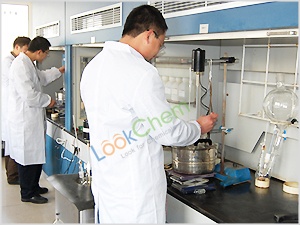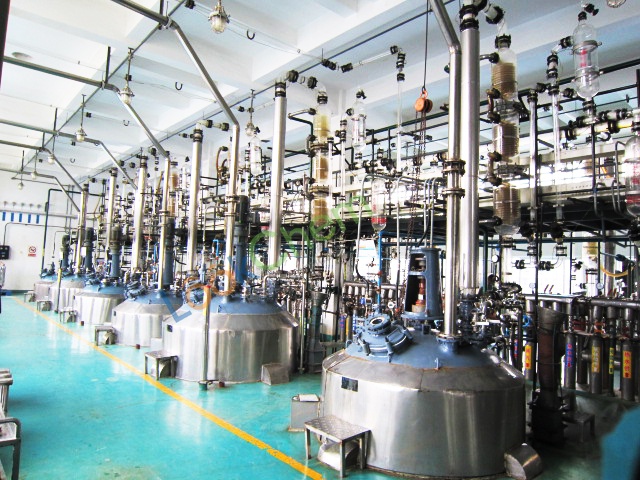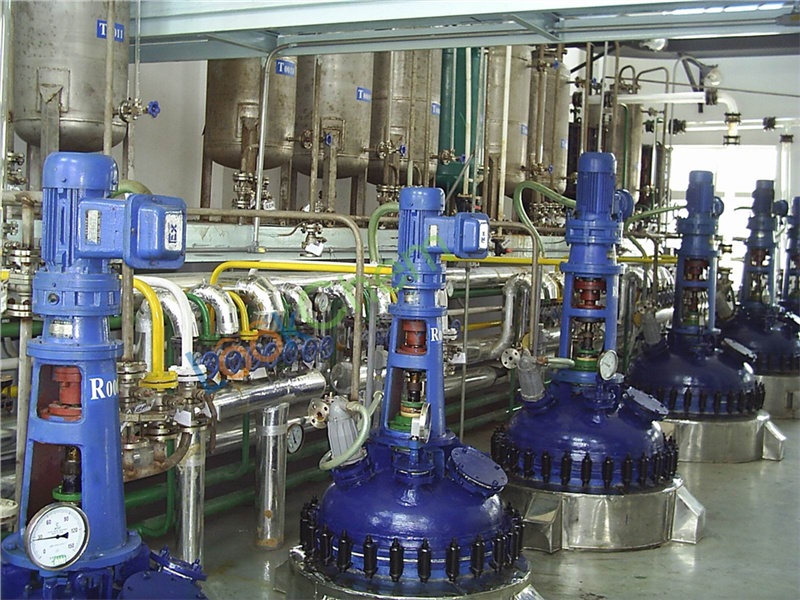Boc-lysine MSDS
- Product Details
- Company Profile
The following MSDS detailed information are provided by Nanjing Aily Biotechnology Co., Ltd, one specialized Boc-lysine supplier in China.
1. IDENTIFICATION OF THE SUBSTANCE/MIXTURE AND OF THE COMPANY/UNDERTAKING
1.1 Product identifiersProduct name : H-Lys(Boc)-OH
CAS-No. : 2418-95-3
1.2 Relevant identified uses of the substance or mixture and uses advised against
Identified uses : Laboratory chemicals, Manufacture of substances
2. HAZARDS IDENTIFICATION
2.1 Classification of the substance or mixture
Not a dangerous substance according to GHS.
This substance is not classified as dangerous according to Directive 67/548/EEC.
2.2 Label elements
Caution - substance not yet tested completely.
2.3 Other hazards - none
3.COMPOSITION/INFORMATION ON INGREDIENTS
3.1 Substances
Synonyms : Nε -Boc-L-lysine
Formula: C11H22N2O4
Molecular Weight: 246,3 g/mol
Component
H-Lys(Boc)-OH
Concentration
CAS-No. 2418-95-3
4.FIRST AID MEASURES
4.1 Description of first aid measures
If inhaled
If breathed in, move person into fresh air. If not breathing, give artificial respiration.
In case of skin contact
Wash off with soap and plenty of water.
In case of eye contact
Flush eyes with water as a precaution.
If swallowed
Never give anything by mouth to an unconscious person. Rinse mouth with water.
4.2 Most important symptoms and effects, both acute and delayed
4.3 Indication of immediate medical attention and special treatment needed
no data available
5. FIRE-FIGHTING MEASURES
5.1 Extinguishing media
Suitable extinguishing media
Use water spray, alcohol-resistant foam, dry chemical or carbon dioxide.
5.2 Special hazards arising from the substance or mixture
Carbon oxides, nitrogen oxides (NOx)
Nature of decomposition products not known.
Carbon oxides, nitrogen oxides (NOx)
5.3 Precautions for fire-fighters
Wear self contained breathing apparatus for fire fighting if necessary.
5.4 Further information
no data available
6.ACCIDENTAL RELEASE MEASURES
6.1 Personal precautions, protective equipment and emergency procedures
Avoid dust formation. Avoid breathing vapors, mist or gas.
6.2 Environmental precautions
Do not let product enter drains.
6.3 Methods and materials for containment and cleaning up
Sweep up and shovel. Keep in suitable, closed containers for disposal.
6.4 Reference to other sections
For disposal see section 13.
7. HANDLING AND STORAGE
7.1 Precautions for safe handling
Provide appropriate exhaust ventilation at places where dust is formed.Normal measures for preventive fire
protection.
7.2 Conditions for safe storage, including any incompatibilities
Store in cool place. Keep container tightly closed in a dry and well-ventilated place.
Recommended storage temperature: 2 - 8 °C
7.3 Specific end uses
no data available
8. EXPOSURE CONTROLS/PERSONAL PROTECTION
8.1 Control parameters
Components with workplace control parameters
8.2 Exposure controls
Appropriate engineering controls
General industrial hygiene practice.
Personal protective equipment
Eye/face protection
Use equipment for eye protection tested and approved under appropriate government standards
such as NIOSH (US) or EN 166(EU).
Skin protection
Handle with gloves. Gloves must be inspected prior to use. Use proper glove removal technique
(without touching glove's outer surface) to avoid skin contact with this product. Dispose of
contaminated gloves after use in accordance with applicable laws and good laboratory practices.
Wash and dry hands.
The selected protective gloves have to satisfy the specifications of EU Directive 89/686/EEC and the
standard EN 374 derived from it.
Body Protection
Choose body protection in relation to its type, to the concentration and amount of dangerous
substances, and to the specific work-place., The type of protective equipment must be selected
according to the concentration and amount of the dangerous substance at the specific workplace.
Respiratory protection
Respiratory protection is not required. Where protection from nuisance levels of dusts are desired,
use type N95 (US) or type P1 (EN 143) dust masks. Use respirators and components tested and
approved under appropriate government standards such as NIOSH (US) or CEN (EU).
9. PHYSICAL AND CHEMICAL PROPERTIES
9.1 Information on basic physical and chemical properties
a) Appearance Form: powder
Colour: white
b) Odour no data available
c) Odour Threshold no data available
d) pH no data available
e) Melting/freezing point Melting point/range: 250 °C
Melting point/range: 250 °C
f) Initial boiling point and no data available
boiling rang
g) Flash point no data available
h) Evaporation rate no data available
i) Flammability (solid, gas) no data available
j)Upper/lower no data available
flammability or
explosive limits
k)Vapour pressure
l) Vapour density no data available
m) Relative density no data available
n) Water solubility no data available
o) Partition coefficient: no data available
noctanol/water
p) Autoignition no data available
temperature
q) Decomposition no data available
temperature
r) Viscosity no data available
s) Explosive properties no data available
t)Oxidizing properties no data available
9.2 Other safety information
no data available
10. STABILITY AND REACTIVITY
10.1 Reactivity
no data available
10.2 Chemical stability
no data available
10.3 Possibility of hazardous reactions
no data available
10.4 Conditions to avoid
no data available
10.5 Incompatible materials
Strong oxidizing agents
10.6 Hazardous decomposition products
Other decomposition products - no data available
11. TOXICOLOGICAL INFORMATION
11.1 Information on toxicological effects
Acute toxicity
no data available
Skin corrosion/irritation
no data available
Serious eye damage/eye irritation
no data available
Respiratory or skin sensitization
no data available
Germ cell mutagenicity
no data available
Carcinogenicity
IARC: No component of this product present at levels greater than or equal to 0.1% is identified as
probable, possible or confirmed human carcinogen by IARC.
Reproductive toxicity
no data available
Specific target organ toxicity - single exposure
no data available
Specific target organ toxicity - repeated exposure
no data available
Aspiration hazard
no data available
Potential health effects
Inhalation May be harmful if inhaled. May cause respiratory tract irritation.
Ingestion May be harmful if swallowed.
Skin May be harmful if absorbed through skin. May cause skin irritation.
Eyes May cause eye irritation.
Additional Information
RTECS: Not available
12.ECOLOGICAL INFORMATION
12.1 Toxicity
no data available
12.2 Persistence and degradability
no data available
12.3 Bioaccumulative potential
no data available
12.4 Mobility in soil
no data available
12.5 Results of PBT and vPvB assessment
no data available
12.6 Other adverse effects
no data available
13. DISPOSAL CONSIDERATIONS
13.1 Waste treatment methods
Product
Offer surplus and non-recyclable solutions to a licensed disposal company.
Contaminated packaging
Dispose of as unused product.
14. TRANSPORT INFORMATION
14.1 UN-Number
ADR/RID: - IMDG: - IATA: -
14.2 UN proper shipping name
ADR/RID: Not dangerous goods
IMDG: Not dangerous goods
IATA: Not dangerous goods
14.3 Transport hazard class(es)
ADR/RID: - IMDG: - IATA: -
14.4 Packaging group
ADR/RID: - IMDG: - IATA: -
14.5 Environmental hazards
ADR/RID: no IMDG: no Marine pollutant: no
14.6 Special precautions for users
no data available
15. REGULATORY INFORMATION
This safety datasheet complies with the requirements of Regulation (EC) No. 1907/2006.
15.1 Safety, health and environmental regulations/legislation specific for the substance or mixture
no data available
15.2 Chemical Safety Assessment
no data available
16. OTHER INFORMATION
Further information
Verified Supplier
NANJING AILY BIOTECHNOLOGY CO.,LTD
- Country:
 China (Mainland)
China (Mainland) - Business type: Lab/Research institutions
- Integral:


Contact Details|Similar Products

Escrow ServiceMore
Secure Your Orders With escrow More Transparency,Less Uncertainty


 Add to inquiry cart
Add to inquiry cart



